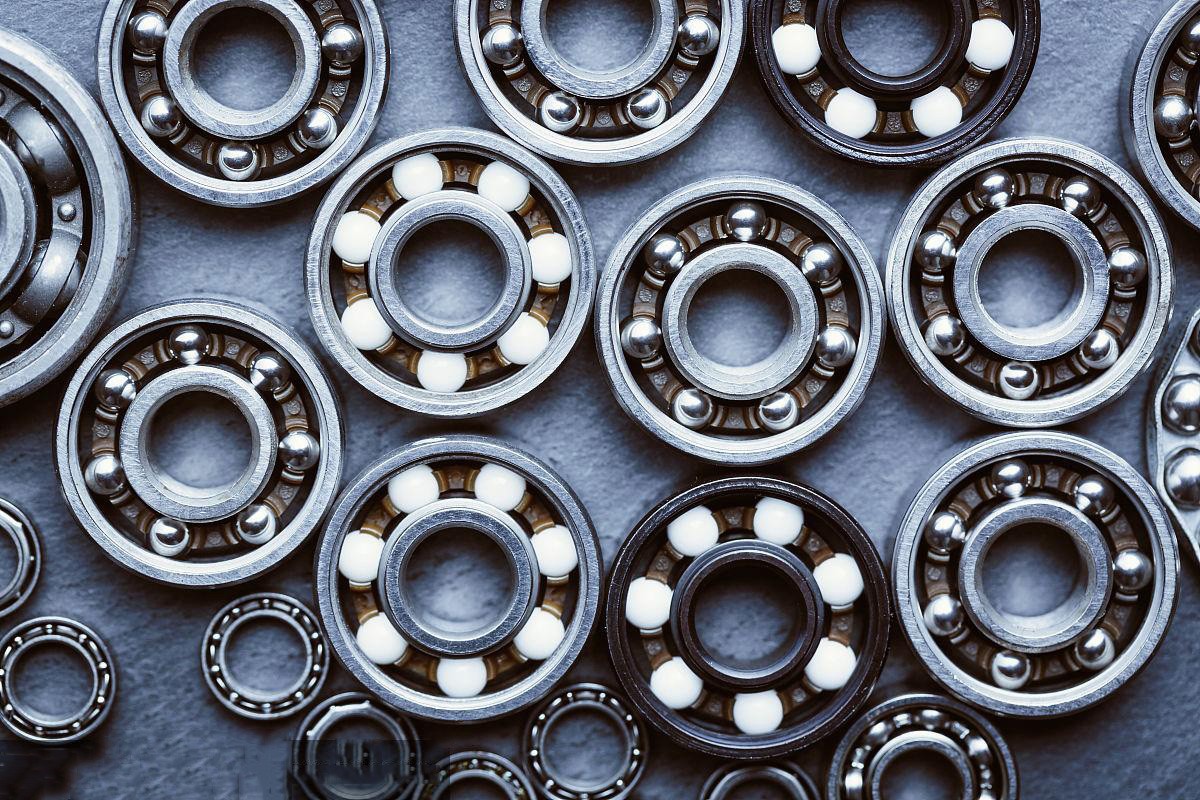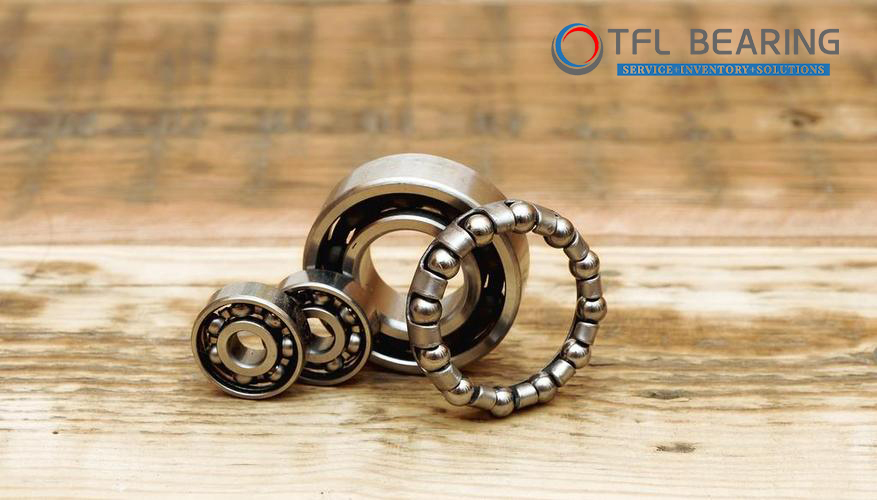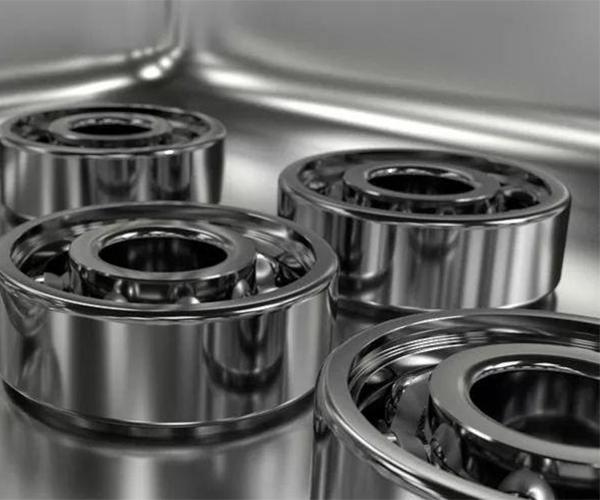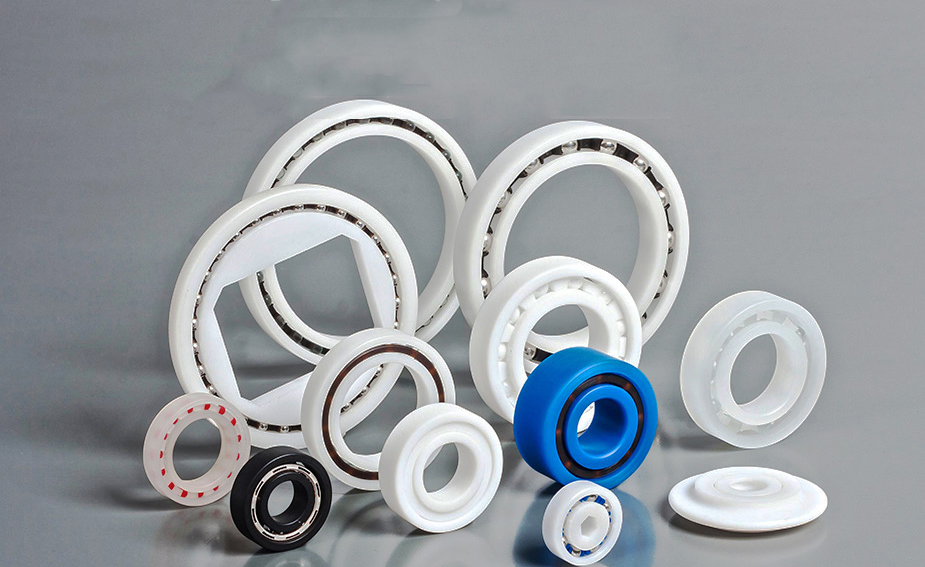Wishlist
The products are limited
The products are limited
As one of the important parts of the operation of mechanical equipment, Bearings need to be selected differently according to different application scenarios, and there are also different requirements for bearing materials. Different choices of bearing materials will bring different performances to the bearing itself. Please follow us below to learn about the material knowledge of bearings and explore their different properties and applications.

| Bearing Types | Advantage | Disadvantage | Application |
| Chrome steel bearing | High hardness; Good wear resistance;Fatigue resistance;Low price and easy to obtain | Not waterproof and easy to corrode | Automobile bearings; Motor bearings |
| Stainless-steel bearings | Lightweight; Waterproof and rust-proof | Low hardness; High price | Food processing; Medical equipment; Pharmaceutical machinery |
| Ceramic bearings | High speed; Long life; Non-magnetic insulation; Acid and alkali resistance | Low load bearing capacity; Fragile; High price complex process | Aerospace special bearings; Water pump bearings |
| Plastic bearings | Lightweight; Low noise;Insulation anti-corrosion | Thermal expansion contraction; Easily affected by temperature; Poor dimensional accuracy | Pharmaceutical equipment; Chemical machinery; Agricultural machinery |
Bearing steel is used to make balls, rollers and bearing rings. This is a kind of steel that has undergone special heat treatment and surface treatment. It has high hardness, wear resistance, and fatigue strength, and it can meet the working requirements of high-speed bearings under complex stress conditions.
Bearings are subjected to tremendous pressure and friction when working, so the bearing steel is required to have high and uniform hardness and wear resistance, as well as a high elastic limit. The requirements for the uniformity of the chemical composition of bearing steel, the content and distribution of non-metallic inclusions, and the distribution of carbides are stringent. It is one of the most stringent steel types in all steel production. The classification method of bearing steel that has been included in the standard in my country is similar to the International Organization for Standardization ISO, which corresponds to the four categories of high carbon chromium bearing steel, carburized bearing steel, high temperature bearing steel and alloy. High carbon chromium-bearing steel is an evergreen tree in the family of bearing materials. High-carbon chromium-bearing steel represented by GCr15 contains about 1% carbon and 1.5% chromium. This alloy ratio gives it excellent hardness and wear resistance. High carbon chromium bearing steel GCr15 is the most produced bearing steel in the world, accounting for more than 80% of the world's total bearing steel production. It has been widely used in the manufacturing of various types of automobile bearings, motor bearings and other fields.

Bearing steel is mainly used to manufacture rolling elements and rings of rolling bearings. Bearing steel bearings have the characteristics of long life, high precision, low heat generation, high speed, high rigidity, low noise, and high wear resistance. Therefore, bearing steel must have high hardness, uniform hardness, high elastic limit, high contact fatigue strength, necessary toughness, certain hardenability, and corrosion resistance in atmospheric lubricants. To achieve the above performance requirements, strict requirements are imposed on the uniformity of chemical composition, content and type of non-metallic inclusions, carbide particle size and distribution, and decarburization of bearing steel. Bearing steel is divided into high carbon chromium bearing steel, carburized bearing steel, high temperature bearing steel and special bearing materials according to characteristics and application environment.
In some special environments, such as humid or corrosive environments, stainless steel bearings have better corrosion resistance.
Stainless steel bearing rings and rolling elements are made of AISI SUS440C stainless steel that has been vacuum-quenched and tempered. The cage and seal ring skeleton materials are made of AISI304 stainless steel. Compared with ordinary bearing steel, stainless steel bearings have stronger anti-rust and anti-corrosion properties, choose the appropriate lubricant, dust cover, etc, and it can be used in the environment of -60℃~+300℃.
Stainless steel ball bearings can resist corrosion caused by moisture and several other media. In addition, stainless steel bearings have high mechanical strength and large load capacity, so they are widely used in food processing, medical equipment, and pharmaceutical machinery.

1. Excellent corrosion resistance: Stainless steel bearings are not easy to rust and have strong corrosion resistance.
2. Washable: Stainless steel bearings can be washed directly with water, making them clean and hygienic.
3. Can run in liquid: The characteristics of stainless steel make it possible to make bearings and bearing seats that run in liquid.
4. Slow depletion speed: S316 stainless steel bearings do not need lubrication if the application scene speed and load are low.
6. High heat resistance: Stainless steel bearings equipped with high-temperature polymer cages or without cages in a complete patchwork structure can operate at higher temperatures ranging from 180°F to 1000°F. (But high-temperature resistant grease is required)
Ceramic materials are the new star in the bearing family. They have the characteristics of light weight, high hardness and strong wear resistance. Silicon nitride (Si3N4) and zirconium oxide (ZrO2) are two commonly used ceramic materials. They have the characteristics of high hardness, good wear resistance, good chemical stability, and good thermal stability. Therefore, ceramic bearings are suitable for high speeds, high temperatures, etc. They show great potential in high-speed precision machinery and aerospace fields under extreme environments.

1. High rotation speed and acceleration capability;
2. Long life and wear resistance - the fatigue life of all-ceramic bearings is expected to be 10-50 times longer than that of all-steel bearings, and the service life of hybrid ceramics bearings is also about 3-5 times longer than that of all-steel bearings;
3. Less lubrication is required - the friction coefficient of ceramic materials is low, and oil-lubricated ceramic bearings are used when the lubricating oil becomes thin or lean, its lubrication capacity is still no less than that of traditional lubricants commonly used in steel bearings;
4. Abrasion resistance - since ceramic materials are inert materials, they are more resistant to corrosion and wear;
5. High rigidity - ceramic materials have high elastic modulus, its rigidity is 15-20% greater than that of ordinary steel bearings;
6. High-temperature resistance - all-ceramic bearings can work at temperatures above 500C without deformation or damage;
7. Non-magnetic and non-conductive - ceramic bearings are not affected by magnetism and electricity to function normally.
With the deepening of research and breakthroughs in mass manufacturing technology, the application prospects of ceramic bearings in high-speed, high-temperature, corrosion-resistant and other fields will be very promising.
Plastic bearings have the advantages of being lightweight, corrosion-resistant, and low-noise. Different materials have different properties and applicable occasions. Choosing the right material is crucial to the performance and service life of the bearing.
HDPE, PE, and UHMWPE materials are widely used in plastic bearings. These materials have been proven to be used in relatively weak acid-base cross environments (30% CuCl2 solution and 30% NaOH solution test); In strong acid and alkali environments PVDF and PTFE materials can be used, and PTFE can be used in all concentrated acid and alkali situations, including HF and fuming sulfuric acid and nitric acid (more than 98%). There are a variety of material solutions for different application conditions of plastic bearings. Plastic bearings can still operate freely even in the most severe acid, alkali, salt, solvent, oil, gas, and seawater erosion, ensuring ideal durability and life expectancy. PVDF, PTFE (Teflon), PPS (polyphenylene sulphide), PEEK (polyetheretherketone), PEI (polyetherimide), etc. have all proven to be ideal materials for making high-temperature plastic bearings. PEI can be used at long-term temperatures of 290℃, the short-term temperature resistance can reach up to 350℃. It is the best high-temperature performance among all known engineering plastics.

Precision plastic bearings have improved precision and tolerances compared to traditional plastic bearings. Based on maintaining the traditional advantages of plastic bearings, the inner and outer rings, rolling elements and cages are made of materials suitable for precision processing. Generally, the inner and outer ring materials are POM, PPS, or PEEK, and the cage is made of glass fibre-reinforced nylon 66 ( RPA66-25), or PEEK, the rolling elements are glass balls, stainless steel balls or ceramic balls. Thus achieving precision and higher speed operation.
Bearings can be divided into many types according to their materials, and they can be made into different applications according to different materials. For example, the common 608 deep groove ball bearings are made of bearing steel when used as motor bearings, and they are made of ceramic hybrid materials when used as skateboard bearings. It is made of stainless steel when used as a fishing wheel.
Therefore, when purchasing bearings, you should choose the one that suits you according to the usage. Our TFL Bearing has been focusing on bearing for more than 10 years. If you have any needs, please do not hesitate to contact us. We are happy to help you.